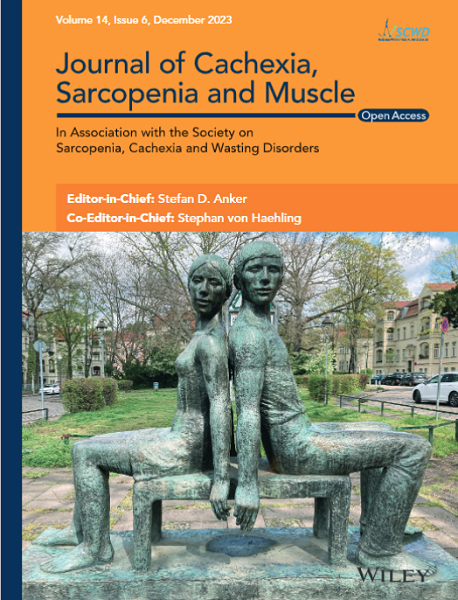The presence of sarcopenia in patients with chronic kidney disease (CKD) is associated with poor prognosis. The mechanism underlying CKD-induced muscle wasting has not yet been fully explored. This study investigates the influence of renal secretions on muscles using multiomics sequencing.
The kidney transcriptome analysis by RNA-seq and protein profiling by tandem mass tag (TMT), serum TMT and muscle TMT were performed in CKD established using 0.2% adenine and control mice. Spp1 recombinant protein was used to study its effect on myotube atrophy in vitro. In animal experiments on CKD, pharmacological inhibition of Spp1 was used to explore the role of Spp1 in skeletal muscle wasting. Transcriptome analysis was performed to identify differentially expressed genes (DEGs) in the gastrocnemius muscle following Spp1 pharmacological inhibition.
In the renal transcriptome and TMT, 503 and 377 proteins/genes respectively were co-upregulated and co-downregulated. In the serum TMT of CKD and normal control (NC) mice, 22 upregulated and 7 downregulated differentially expressed proteins (DEPs) showed the same expression patterns as those in the kidney transcriptome and TMT analysis. Based on bioinformatics analysis and reported studies, we selected Spp1 for further validation. Spp1 recombinant protein was added to C2C12 myotubes in vitro, and the results indicated that Spp1 significantly increased the protein levels of the muscle atrophy marker (Murf-1) and promoted the smaller myotubes (all p < 0.05). Compared with NC mice, Spp1 mRNA and protein levels were significantly upregulated in the kidneys of CKD mice, and the serum concentration of Spp1 was also markedly increased (all p < 0.05). In animal experiments, pharmacological inhibition of Spp1 increased the weights of gastrocnemius and tibialis anterior muscles (p < 0.05) and improved muscle atrophy phenotype. Transcriptome analysis showed that DEGs in the gastrocnemius muscle following Spp1 pharmacological inhibition were enriched in protein digestion and absorption, glucagon signalling pathway, apelin signalling pathway and ECM-receptor interaction pathway.
Our study is the first to establish a regulatory network of kidney-muscle crosstalk to explore the potential mechanism of CKD-related sarcopenia. Employing multiomics analysis, cellular assessment and animal experiments, we have identified that Spp1 could potentialy serve as a promising therapeutic target for CKD patients with sarcopenia.



